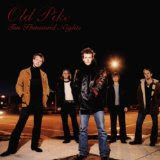BELIEVE, CHER (WARNER BROS.):
Sometimes low expectations are a good thing.
For example, take the holidays.
Any occasion for a family gathering
necessitates planning for the worst.
Then, if by luck, everyone is still speaking
and no one winds up welcoming the new year from the pokey, it’s all good.
Same goes for a new Cher release.
Granted, her ‘70s variety show with Sonny
Bono remains a TV classic.
Her acting talents are considerable.
And her old songs, with their patina of camp,
are still fun to listen to. (Dark Lady
being my personal fave.)
But these days Cher is more a celebrity than
a formidable musical force.
With that in mind, Believe is a pleasant surprise.
Vocally, she’s the same old Cher: the strong,
resonant, sometimes deep voice with the occasional little flutter from the back
of the throat.
Her material, though, has a contemporary
sound – thumping beats and electronic textures.
The title track/opener grabs attention with
its upbeat feel and mantra, “Do you believe in life after love?”
Cher’s
cover of Amy Grant’s The Power
delights with its energy and elegance.
Strong Enough is a retro-sounding
disco anthem in the vein of Gloria Gaynor’s I
Will Survive.
Spanish guitar flavors the beautiful, exotic Dov’e L’Amore.
The disc’s best tune, however, is Taxi, Taxi with its monster hook and
poetic lyrics.
Though Believe
is little more than fluffy ear candy, it’s still a tasty morsel from an
ever-radiant star.
--Heidi
Johnson-Wright





















